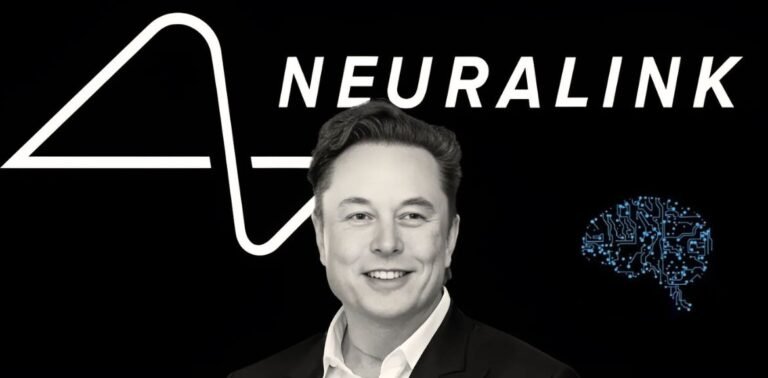BCI has recently made it to the headlines: Neuralink, Elon’s brainchild venture, a company that is engaged in the research for brain computer interfaces, has raised an enormous amount of $600 million in funding and currently stands at a valuation of $9 billion. In simple terms, BCI companies that rely on investments are looking to activate new stages of growth in this segment. What is the best reason for why investors suddenly want to dive into it? What do we expect from technology today and tomorrow? From a human perspective, what does this offer the people that need it the most, including medical patients and tech enthusiasts? What does the world change now and in the coming years? Let us put things personally.
Key Information
| Key Information | Details |
| Funding Amount | $600 million |
| Latest Valuation | $9 billion |
| Funding Round Date | May 2025 |
| Major Investors | Founders Fund, Google Ventures, sovereign wealth funds (full list undisclosed) |
| Previous Valuation | $5 billion (November 2023) |
| Technology Focus | Brain-computer interfaces (BCIs) |
| Core Product | N1 implant – wireless, high-channel-count brain implant |
| Recent Milestones | Successful human trials, including communication for paralysed and non-verbal patients |
| Regulatory Status | FDA “breakthrough device” designation, ongoing clinical trials |
| Upcoming Projects | “Blindsight” implant trial to restore vision in blind individuals (planned for 2026) |
| Market Impact | Accelerates BCI innovation, attracts global investment, boosts neurotechnology sector growth |
| Company Size | Approximately 300 employees |
| Long-Term Vision | Human-AI symbiosis, expanded applications in healthcare, and cognitive enhancement |
| Industry Context | Competing with firms like Precision Neuroscience, Blackrock Neurotech, and Synchron |
| Market Projection | The BCI market is expected to reach $12.4 billion by 2030 |
What Is Neuralink and Why Does It Matter?
Neuralink’s implanted brain interfaces, established by Elon Musk in 2016 alongside a group of neuroscientists and engineers, aim to integrate advanced computing with the human brain. The flagship innovation revolves around devices that allow for the reading and interpreting of signals given from the brain. This means that a phone, computer, or wheelchair could be utilized using simple thoughts.
Key Goals of Neuralink
- Restoration of communication alongside mobility in those constricted by paralysis or other neurological disorders
- Facilitate communication between the brain and devices without any intermediate steps.
- Augment humans’ ability to think and function eventually.
- The newly founded funding round highlights Neuralink’s growing public support granted due to their groundbreaking vision.
The $600 Million Funding Round: Details and Significance
Who Invested and Why?
The most recent funding round of $600 million saw Founders Fund, Google Ventures, and a couple of other sovereign funds come in. While still hiding most of the backers, the sheer volume and amount of diverse backers hint at great belief in Neuralink’s progress.
This is happening despite the fact that Neuralink’s technology is still in clinical trials and not yet commercially available.
Why is this so significant?
Due to this newfound trust, their overall company evaluation has dramatically improved since 2023. Resulting in a $3.5 billion lower estimate to 9 billion in a matter of 18 months, which is an astounding 150% increase!
The company’s last valuation within the quarter of 2023 at 3.5 billion, soaring in the span of one and a half years after gaining 150% of stock value alongside gaining the trust of major investors
The enthusiasm of investors is driven by the hope that BCI technology could transform health care, communication, and even our relationship with the digital universe.
How Does This Compare to Previous Rounds?
Fundraising for Neuralink has advanced at an unprecedented pace:
- November 2023: Secured $43 million with a $5 billion valuation.
- August 2023: Completed Series D funding with a total of $280 million.
- May 2025: Funded $600 million, raising the valuation to $9 billion.
What’s Fueling Investor Confidence?
Breakthroughs In Human Trials
Looking back, Neuralink has set several new records in the past year:
- Successfully implanted BCI chips in three patients suffering from advanced stages of paralysis or speech loss.
- A recent patient, a non-verbal ALS sufferer, could interact and create YouTube videos through thought processes after coding algorithms.
- These demonstrations of the technology’s feasibility have captured the world’s focus and attention.
Regulatory Progress
The crucial breakthrough came in 2024 when the US FDA issued the company with the classification of “breakthrough device,” which is vital to advancing clinical trials and commercialisation.
Ambitious Roadmap
The company is working towards commencing its first trial for the ‘Blindsight’ implant. The aim is to restore vision to individuals who are completely blind, with a proposed start date of 2026, alongside the Cleveland Clinic in the UAE. This trial will pave the way for the complete restoration of human senses.
The Technology: How Does Neuralink Operate?
The N1 implant is Neuralink’s marker product, a device positioned within the skull that is connected to the brain via thin, flexible wires in the form of electrodes. This device picks and processes neural signals, which are sent wirelessly to mobile devices or computers.
Key Features
- High Channel Count: With the ability to record from over one thousand channels, this surpasses existing clinical devices.
- Wireless Communication: No need for external wires improves the system’s intrusiveness as well as practical functionality.
- Cosmetic Invisibility: To avoid social stigma, the device is designed to be cosmetically invisible once implanted.
Potential Applications
- Restoring movement and communication for people with paralysis.
- Treating neurological disorders like Parkinson’s disease and Epilepsy.
- New advanced forms of human-computer interaction, such as gaming and productivity tools.
The Brain-Computer Interface Market: Why Now?
- The BCI market is experiencing growth, and neural disorders, strokes, and trauma injuries are the main BCI technology.
- Miniaturised parts and AI, alongside enhanced wireless tech, improve costs, practicality, and affordability.
- Research and development are set to increase with the attributes of private and governmental funding.
Market Forecasts
In 2024, the global BCI market is expected to be valued at $2.93 billion and is anticipated to grow to $12.4 billion by 2030.
Competition and Challenges
Neuralink is not the only one in this race. Other companies like Precision Neuroscience, Blackrock Neurotech, and Synchron are also making important advancements in the research and commercialization of BCIs.
Challenges Facing by Neuralink
- Regulatory obstacles: Fully implanted BCIs face strict safety and efficacy evaluation processes to protect patients and prove the device’s effectiveness before market release.
- Privacy: Data related to the brain is in a class of its own with regard to sensitivity, posing new ethical and information security risks.
- Reimbursement: The evolving status of insurance coverage for BCI procedures may adversely impact the rate of acceptance and utilization.
With these challenges, Neuralink still holds a defensive position in the global market due to a first-mover advantage, technical capabilities, and support from investors.
External Value: Achievements
A powerful story supporting Neuralink’s narrative is when a patient with ALS was able to speak for the first time by using the implant to communicate and narrate YouTube videos. Additionally, a patient who was paralyzed from the shoulders down was later able to ‘think’ his way through playing video games and browsing the Internet.
These technical achievements are not just milestones; they transform life for patients and their families.
What is Next for Neuralink?
Upcoming Trials and Innovations
- Blindsight Implant: The first human trials for restoring sight in completely blind individuals are set for 2026.
- Expanding Indications: Apart from paralysis and blindness, Neuralink is looking into the enhancement of general cognitive function and therapies for mental illness.
- Global Partnerships: Partnerships with top clinics and research centres are aiding in speeding up the clinical validation and adoption processes.
Long-Term Vision
With every advancement, it becomes easier to achieve Elon Musk’s vision of attaining human-technology integration, which would make functioning with technology possible at the speed of thought. This remains a goal for the distant future.
Final Thoughts
The raise Neuralink received of $600 million with a valuation of $9 billion is far more than just a financial achievement. It’s a clear indication that brain-computer interfaces are advancing toward having real-world applications, rather than being constrained to the realm of science fiction. The company still has challenges ahead of it, but the expectations being set for the future of healthcare, communication, and human-computer interaction are nothing short of revolutionary.
As Neuralink makes new breakthroughs, the world is watching. If you’re an investor, a patient anticipating fresh forms of treatment, or a technology aficionado, this is a tale that’s just unfolding.
Fresh Insights: What Neuralink does differently from other companies in the Industry?
- Lean, High-Expertise Team: Unlike traditional medtech companies, which have higher employment numbers, Neuralink maintains a staff of about 300, allowing it greater agility and accelerating innovation.
- Investor Sentiment: The company is projected to receive $9 billion in valuation prior to receiving commercial revenue, which speaks volumes regarding investor confidence in Musk’s leadership and all BCIs in general.
- Potential Ripple Effects: Aside from the apparent effects that Neuralink’s progress has on BCIs, they are changing the narrative in artificial intelligence and even the cryptocurrency market as they show investors new avenues for technological advancement.
FAQs
Following a $600 million funding round, Neuralink was valued at $9 billion in May of 2025.
The most recent round included Founders Fund, Google Ventures and some sovereign wealth funds.
With a goal of restoring and eventually augmenting human functions, Neuralink develops brain-computer interfaces that allow users to control digital devices through neural signals.
At the moment, Neuralink is still undergoing clinical trials for its technology, which means it is not commercially available. The timeline for broader access to the product is still dependent on successful trial results as well as regulatory approval.
With the most recent funding round for Neuralink, it is highly likely that there will be renewed competition, labor opportunities, and innovation in the BCI sector in addition to stirring investor and public interest in neurotechnology.
Disclaimer
This article does not constitute medical, investment, or legal advice. All figures and facts were accessible as of May 2025 and are subject to change. Readers are encouraged to seek professional guidance prior to any decision based on the information presented in this document.
Also check out: The Purchase of Silvus Technologies for $4.4 Billion by Motorola Solutions: The Impact of this Major Acquisition

